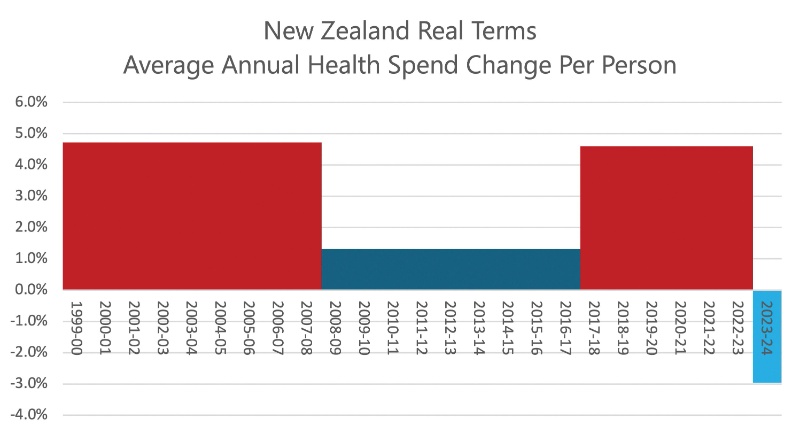August 6 2013
Southern Discoveries’ Sinbad Gully conservation project outstanding success
A major Milford Sound conservation project spearheaded by leading South Island tourism company Southern Discoveries is proving an outstanding success in restoring a natural haven to its former glory.
With the help of volunteers from Southern Discoveries’ staff and the Department of Conservation, the most recent trip into Sinbad Gully revealed only five rats had been caught compared to the previous trip when four stoats and eight rats were trapped.
The Sinbad Gully initiative was launched in 2009 by Southern Discoveries as a joint project with the Fiordland Conservation Trust and Department of Conservation.
Named after the area at the base of world-renowned Mitre Peak in Milford Sound, the project is a long-term pest control programme that will enable threatened birds such as rock wren, kea, whio, kiwi, and weka, as well as lizards and other large colourful invertebrates, to increase in number.
In the last 12 months the monitoring team has caught 32 rats, one mouse and 13 stoats and carried out monitoring of Silver Beech seed fall in the area and population checks of the endangered Sinbad Skink.
Of the 13 stoats caught, only one has been caught in the top half of the valley, with all others trapped in its lower reaches, which is good for the rare species of skink and gecko which prefer the higher rocky outcrops.
In the 1970s Sinbad Gully was home to the last known kakapo living on the mainland. Since then new species of gecko and skink have been discovered. The top of Sinbad Gully is the only known habitat of the rare Sinbad Skink which has recently been classified as nationally endangered.
Since the project’s inception four years ago 55 stoats and 112 rats have been trapped, regular Silver Beech seed fall monitoring has taken place, rat and mice tunnels monitored for activity, and Whio and Sinbad Skink surveys conducted.
Predators love to feed on beech seed so
it’s encouraging to see a low amount of silver beech seed
was recorded in the Sinbad Gully during autumn 2012 and
2013, suggesting that predator numbers will remain low
heading into the 2013/14 season.
Southern Discoveries is strongly committed to the project and aside from its initial support, annual financial contributions and donation of staff time to the project work to date includes the completion of 8.5 km of new tracks to gain access to the valley and the installation of trap markers and over 70 traps.
Paul Stephens, bar supervisor at Southern Discoveries’ Blue Duck Café in Milford Sound, was lucky enough to fly in for the most recent trip to the Gully which can only be accessed via boat or helicopter.
“I was thrilled to get the opportunity to go into Sinbad Gully, because it’s so remote and amazingly beautiful. When you’re up the valley there’s no other sounds, just the birds and wildlife,” he said.
“The weather was just perfect and with a small amount of snow at the head of the valley, it looked stunning. We heard plenty of kea and kaka, which was fantastic to hear.”
“You get an immense satisfaction checking the traps, knowing what you’re doing is protecting and preserving this amazing place for future generations.
“DOC workers officers are fantastic at sharing their knowledge and I can’t wait to go back and work with them again.”
Weather pending the next trap check will be conducted mid-August when another Southern Discoveries’ team member will have the opportunity to take part in the project.
Southern Discoveries General Manager John Robson said the project was very much part of the company’s long term commitment to the regeneration and protection of natural wildlife in the Fiordland area.
“When we started the Sinbad Gully Conservation Project we hoped we’d see positive and tangible effects on the environment and we’ve not been disappointed,” he said.
“Not only does the project have a profound impact on preserving the natural habitat for the future, it also allows our staff to really get to grips with their working environment and be a part of something hugely rewarding.
“There aren’t many places in the world where you can visit a UNESCO Heritage site as part of your job and have such a hands on approach in preserving the environment.”
“The project is a great example of the Department of Conservation, Fiordland Conservation Trust and private business working together to ensure we are doing everything possible for this unique area.”
ENDS
About Sinbad Gully
The Sinbad Gully is located close to the head of Milford Sound within Fiordland National Park and the Te Wāhipounamu - South West New Zealand world heritage area.
In 1974 Sinbad Gully was set apart as a “Special Area” because of the presence of kakapo and the largely unmodified state of the vegetation. This status was lifted in 1992. At this stage deer had become established in Sinbad Gully and kakapo were thought to be no longer present, therefore it was considered no longer necessary to restrict public access under the special area status. Sinbad Gully is now classified as part of the “Eastern Remote Zone” under the Fiordland National Park Management Plan (2007).
The Sinbad Gully has a natural barrier of steep terrain, combined with a cold, wet climate which has limited the invasion of mammalian predators. These attributes have contributed to making it a safer refuge for the rare lizard species such as the Sinbad and Mahogany skinks and the Cascade gecko. All three were only recently discovered in the Sinbad Gully and the Sinbad skink is known only to the Sinbad Gully. Other species present include rock wren, kea, whio, kiwi, weka, large weta and other large colourful invertebrates. The valley was also one of the last refuges of kakapo in Fiordland.
The animal pests that DOC proposes to control have a serious impact on native wildlife through direct predation and competition for food. Control of possums, rats and stoats will be the key focus for the project.
Once the initial knockdown of possums and stoats has been achieved, on-going control work will be required to maintain low predator densities. Maintenance control will be achieved through regular servicing of traps and by monitoring possum densities and controlling as required. The valley walls surrounding the Sinbad Gully form a natural barrier that will limit the re-invasion of introduced predators.
ends



 Gordon Campbell: On The Americanising Of NZ’s Public Health System
Gordon Campbell: On The Americanising Of NZ’s Public Health System NZ Labour Party: Govt Health And Safety Changes Put Workers At Risk
NZ Labour Party: Govt Health And Safety Changes Put Workers At Risk Amnesty International Aotearoa New Zealand: Democracy At Risk
Amnesty International Aotearoa New Zealand: Democracy At Risk Walk Without Fear Trust: New Sentencing Reforms Aimed At Restoring Public Safety Welcomed
Walk Without Fear Trust: New Sentencing Reforms Aimed At Restoring Public Safety Welcomed Rio Tinto & NZAS: Archaeological Project Underway From Historic Excavations At Tiwai Point
Rio Tinto & NZAS: Archaeological Project Underway From Historic Excavations At Tiwai Point New Zealand Deerstalkers Association: NZDA Urges Hunters To Prioritise Safety This Roar Season
New Zealand Deerstalkers Association: NZDA Urges Hunters To Prioritise Safety This Roar Season PSA: 1000 Days Since Landmark Pay Equity Deal Expired - Workers Losing $145 A Week
PSA: 1000 Days Since Landmark Pay Equity Deal Expired - Workers Losing $145 A Week


